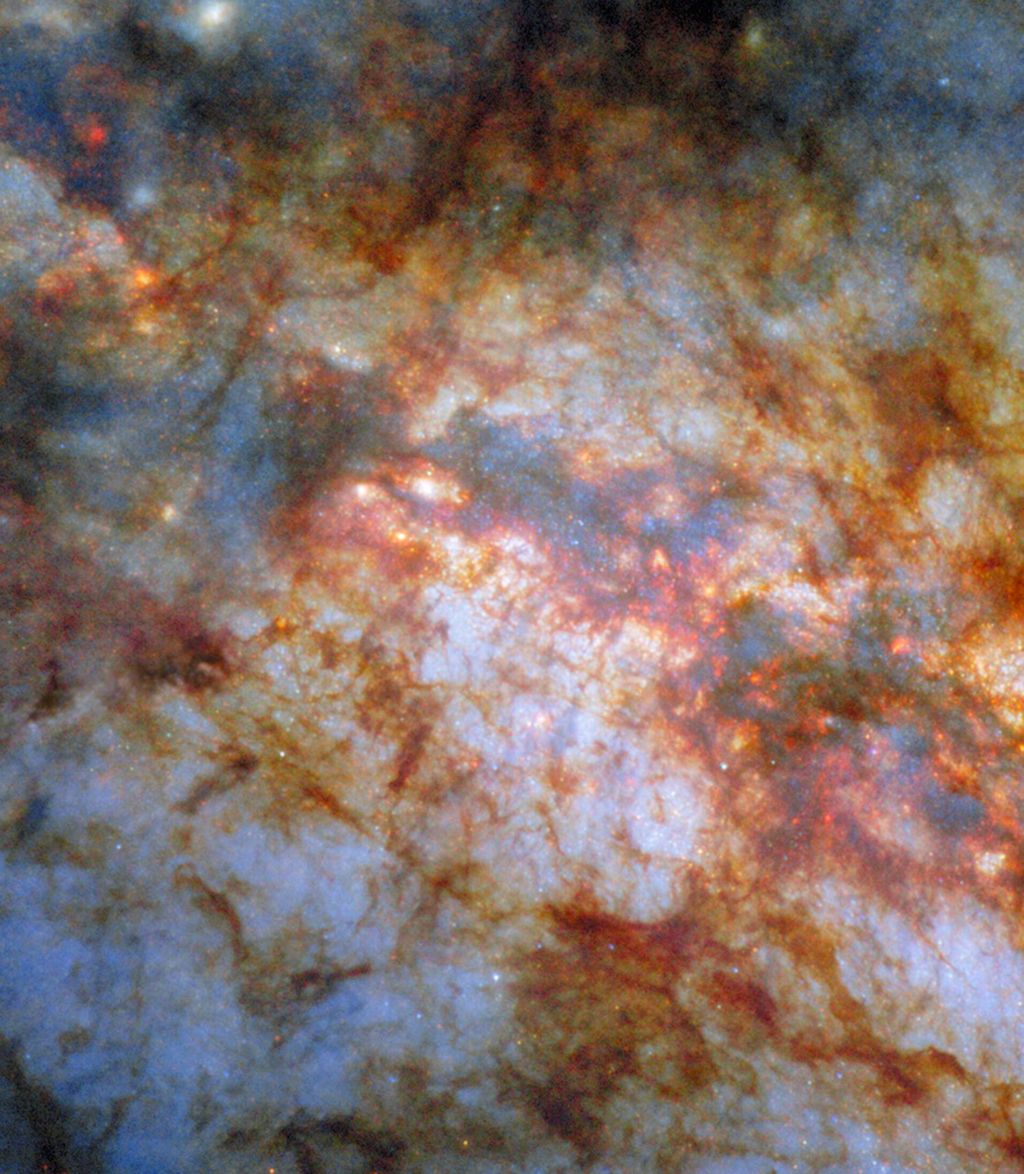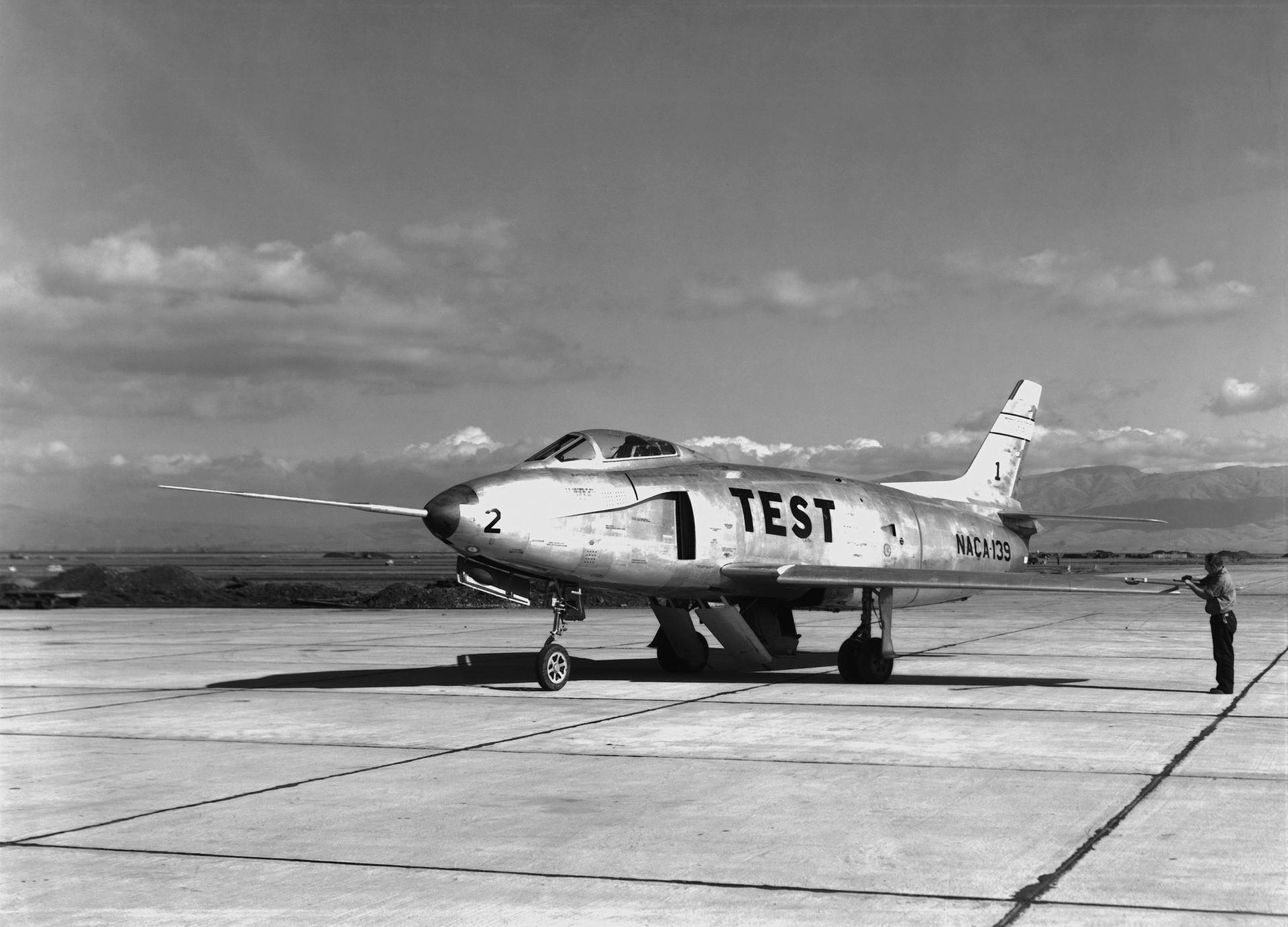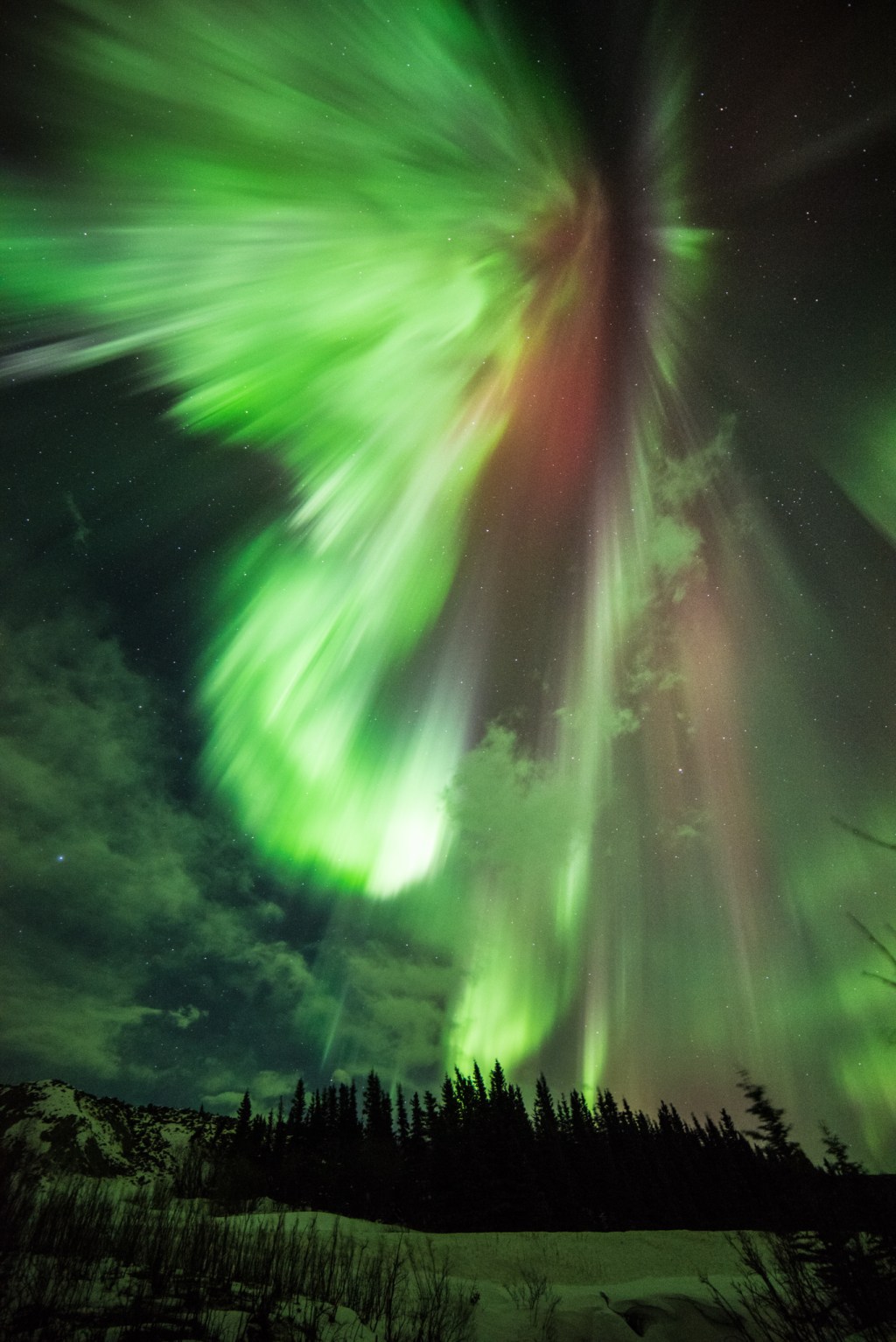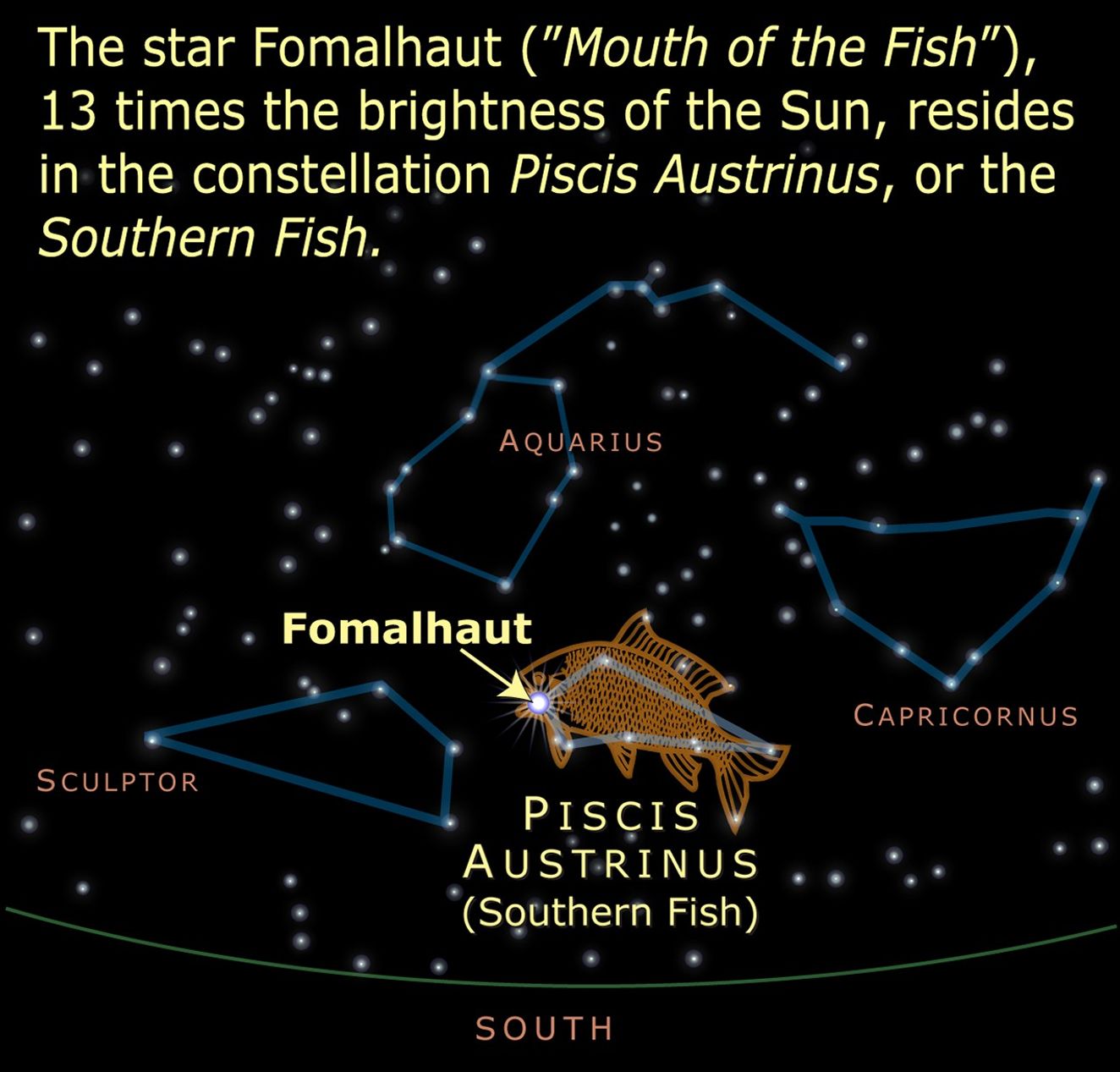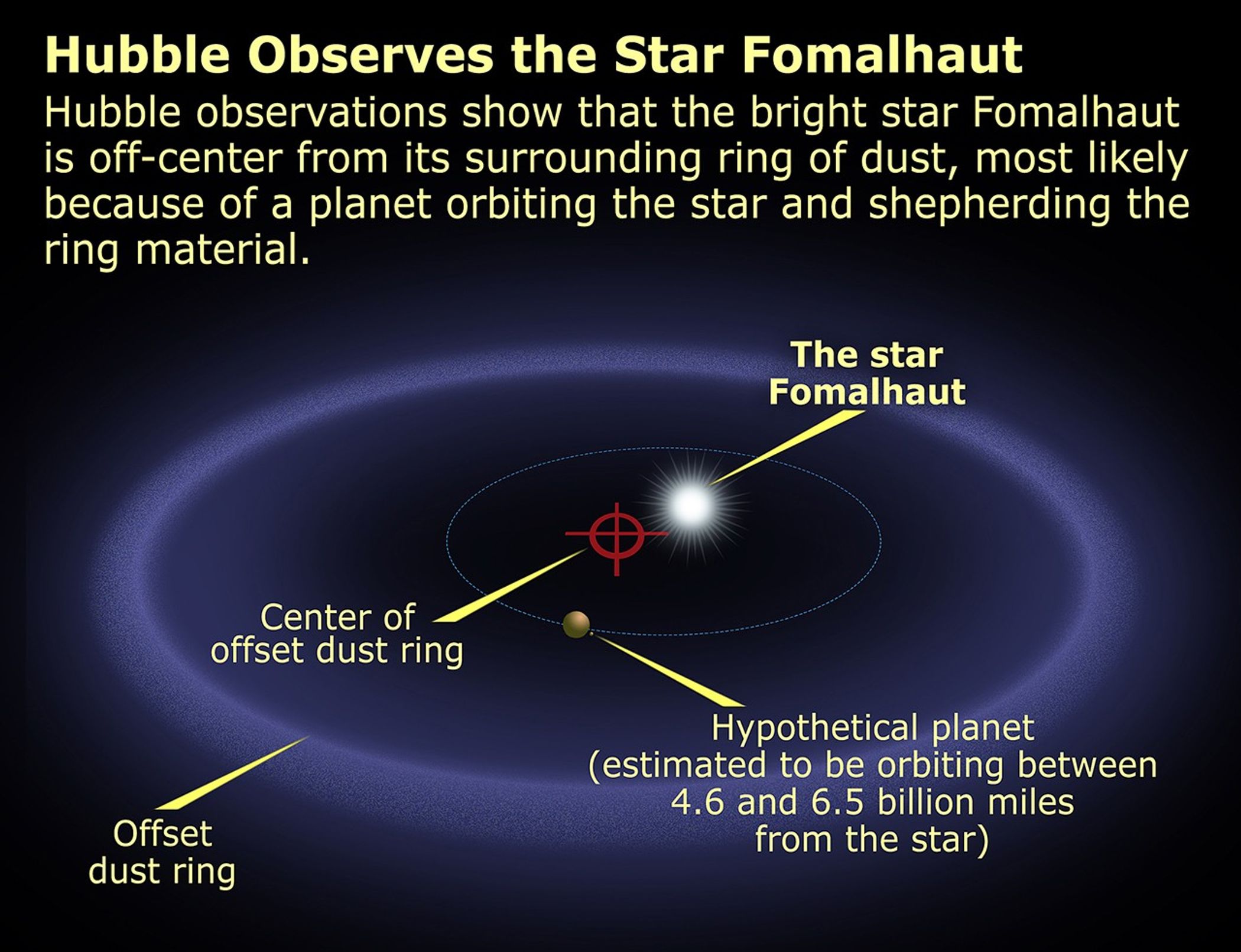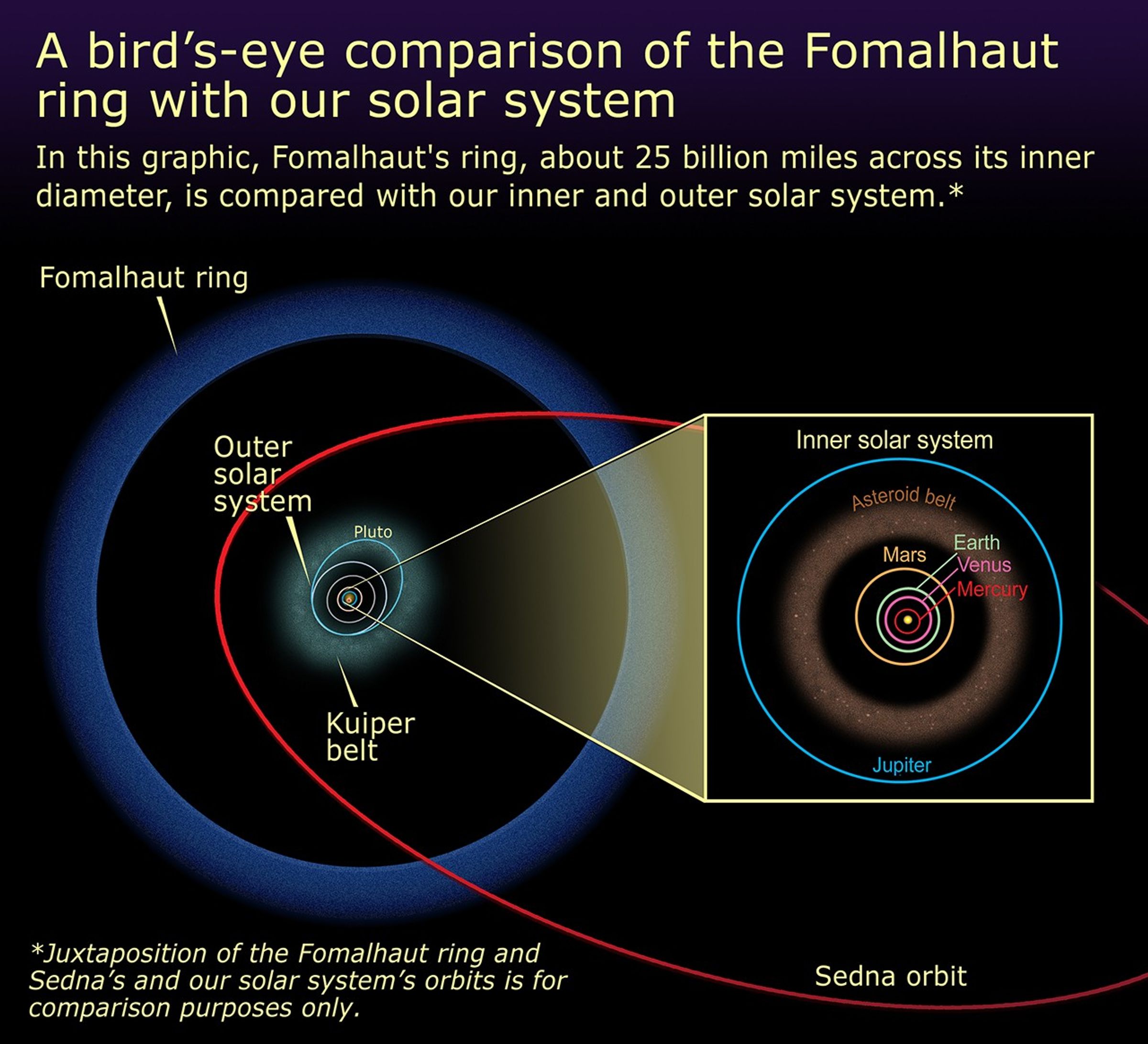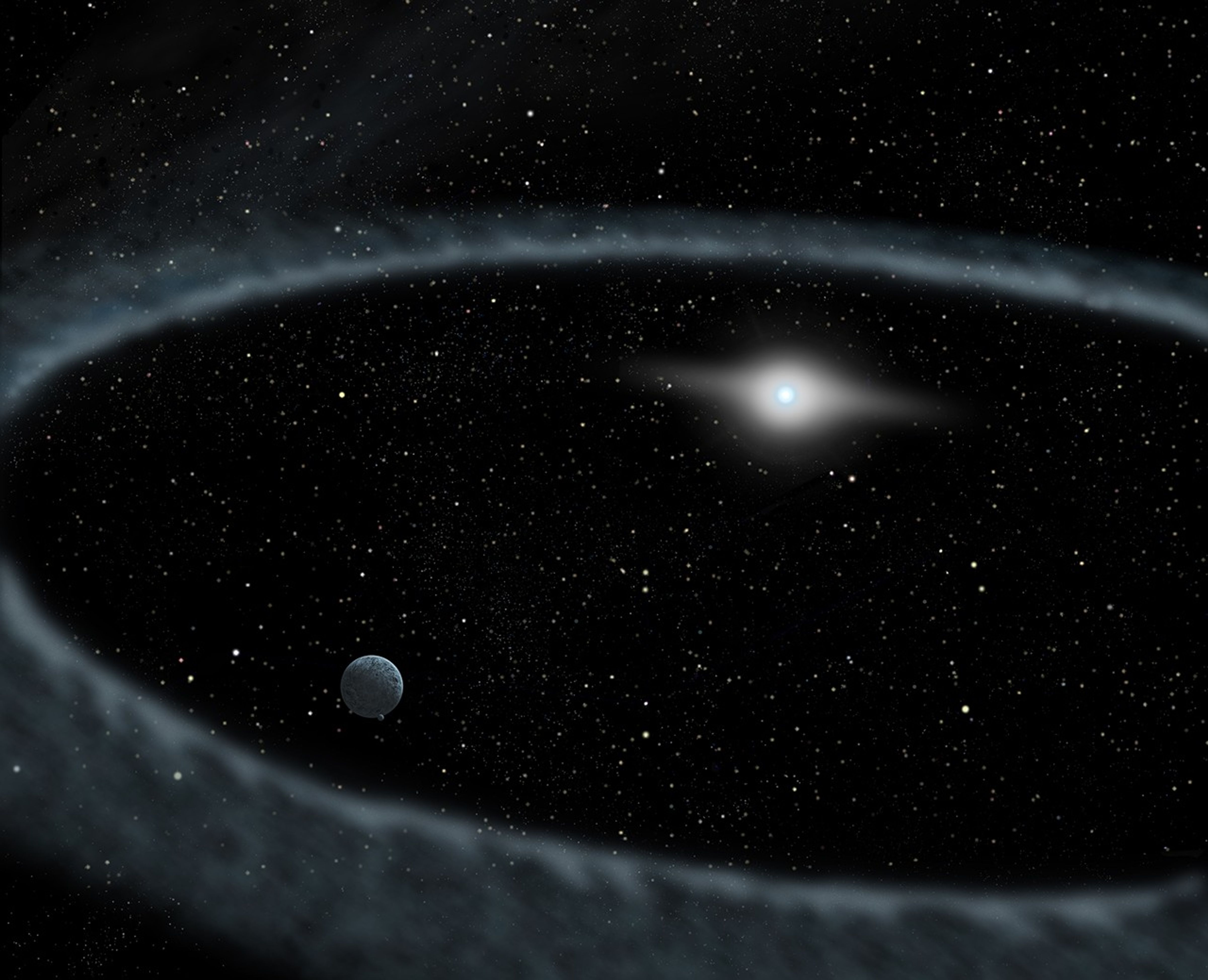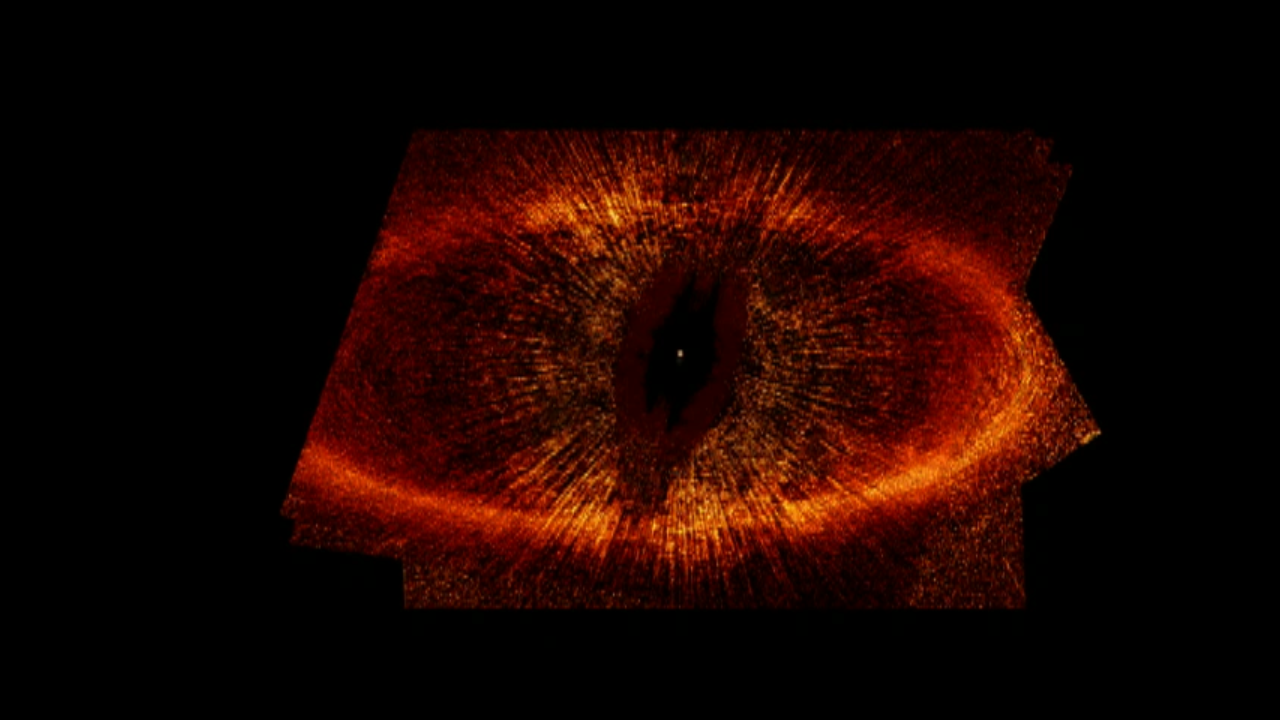1 min read
Debris Ring Around Star Fomalhaut (HD 216956)
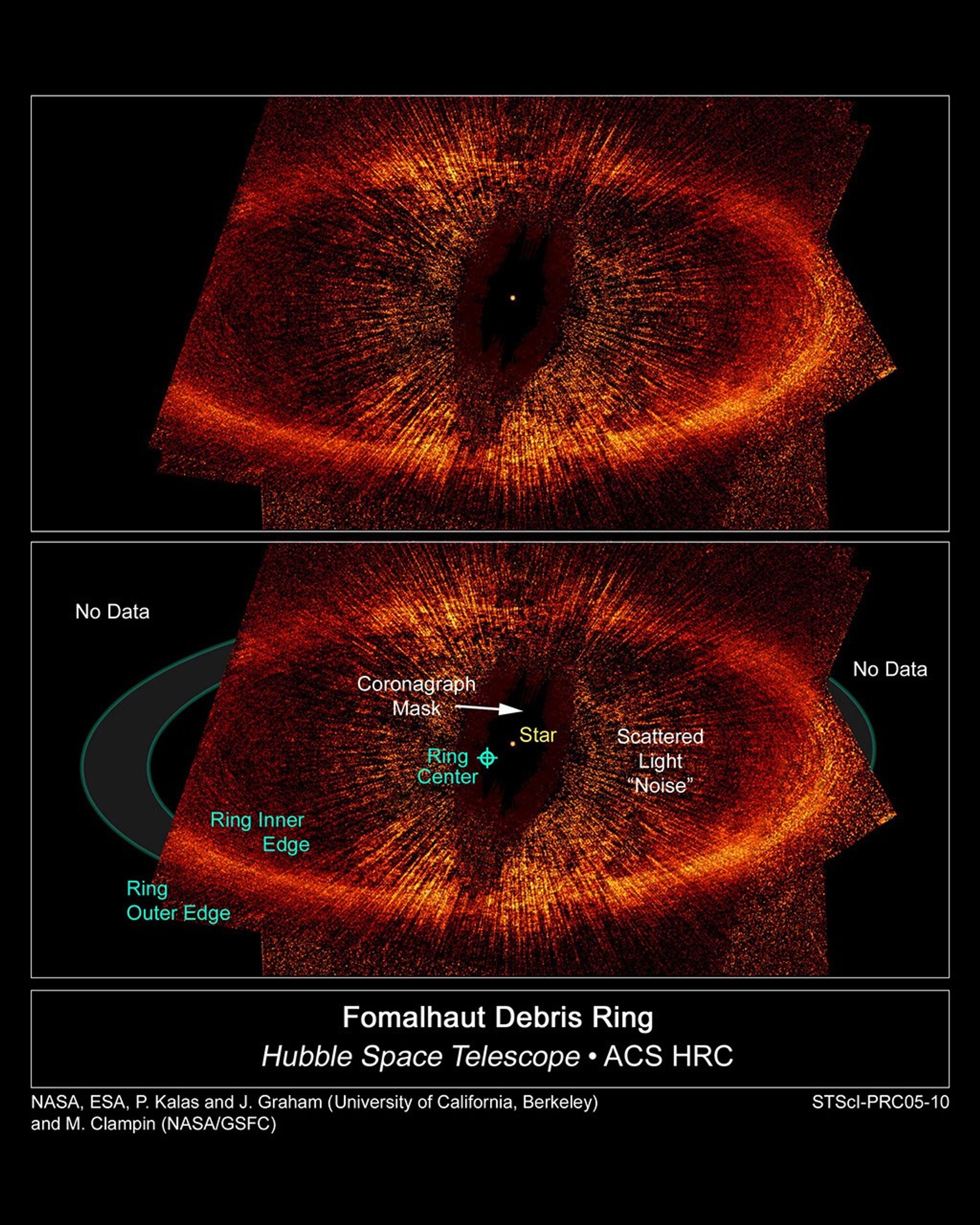
The top view, taken by NASA's Hubble Space Telescope, is the first visible-light image of a dust ring around the nearby, bright young star Fomalhaut (HD 216956). The image offers the strongest evidence yet that an unruly planet may be tugging on the dusty belt. The left part of the ring is outside the telescope's view. The ring is tilted obliquely to our line of sight.
The center of the ring is about 1.4 billion miles (15 astronomical units) away from the star. The dot near the ring's center marks the star's location. Astronomers believe that an unseen planet moving in an elliptical orbit is reshaping the ring.
The view at bottom points out important features in the image, such as the ring's inner and outer edges. Astronomers used the Advanced Camera for Surveys' (ACS) coronagraph aboard Hubble to block out the light from the bright star so they could see the faint ring. Despite the coronagraph, some light from the star is still visible in this image, as can be seen in the wagon wheel-like spokes that form an inner ring around Fomalhaut.
The suspected planet may be orbiting far away from Fomalhaut, near the dust ring's inner edge, between 4.7 billion and 6.5 billion miles (50 to 70 astronomical units) from the star. Only Hubble has the exquisite optical resolution to resolve that the ring's inner edge is sharper than its outer edge, a telltale sign that an object is gravitationally sweeping out material like a plow clearing away snow.
The ring is in the Fomalhaut system's frigid outer region, about 12 billion miles (133 astronomical units) from the star. This distance is much farther than our outermost planet Pluto is from the Sun. The ring's relatively narrow width, about 2.3 billion miles (25 astronomical units), indicates that an unseen planet is keeping the ring from spreading out.
Fomalhaut, a 200-million-year-old star, resides 25 light-years from the Sun in the constellation Piscis Austrinus (the Southern Fish).
The ring is tinted red for image analysis. The Hubble observations were taken over a five-month period in 2004: May 17, Aug. 2, and Oct. 27.
About the Object
- R.A. PositionR.A. PositionRight ascension – analogous to longitude – is one component of an object's position.22h 57m 39.04s
- Dec. PositionDec. PositionDeclination – analogous to latitude – is one component of an object's position.-29° 37' 20.04"
- ConstellationConstellationOne of 88 recognized regions of the celestial sphere in which the object appears.Piscis Austrinus
- DistanceDistanceThe physical distance from Earth to the astronomical object. Distances within our solar system are usually measured in Astronomical Units (AU). Distances between stars are usually measured in light-years. Interstellar distances can also be measured in parsecs.25 light-years away (7.7 parsecs)
- DimensionsDimensionsThe physical size of the object or the apparent angle it subtends on the sky.The ring is approximately 280AU (42 billion kilometers, 26 billion miles) in diameter.
About the Data
- Data DescriptionData DescriptionProposal: A description of the observations, their scientific justification, and the links to the data available in the science archive.
Science Team: The astronomers who planned the observations and analyzed the data. "PI" refers to the Principal Investigator. - InstrumentInstrumentThe science instrument used to produce the data.HST>ACS/HRC
- Exposure DatesExposure DatesThe date(s) that the telescope made its observations and the total exposure time.May, August, October, 2004, Total Exposure Time: 3.6 hours
- FiltersFiltersThe camera filters that were used in the science observations.F606W (V), F814W (I)
- Object NameObject NameA name or catalog number that astronomers use to identify an astronomical object.Fomalhaut, HD 216956
- Object DescriptionObject DescriptionThe type of astronomical object.Star with Disk
- Release DateJune 22, 2005
- Science ReleaseElusive Planet Reshapes a Ring Around Neighboring Star
- Credit
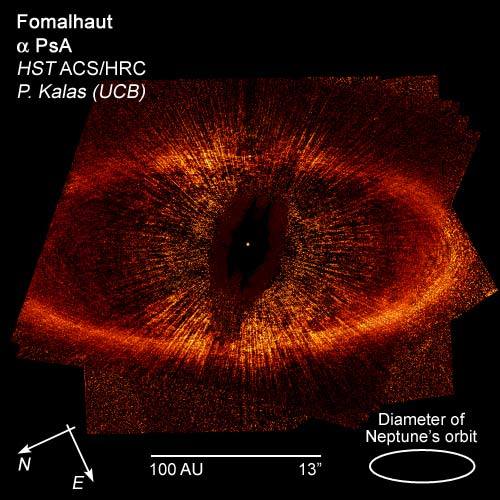
Related Images & Videos
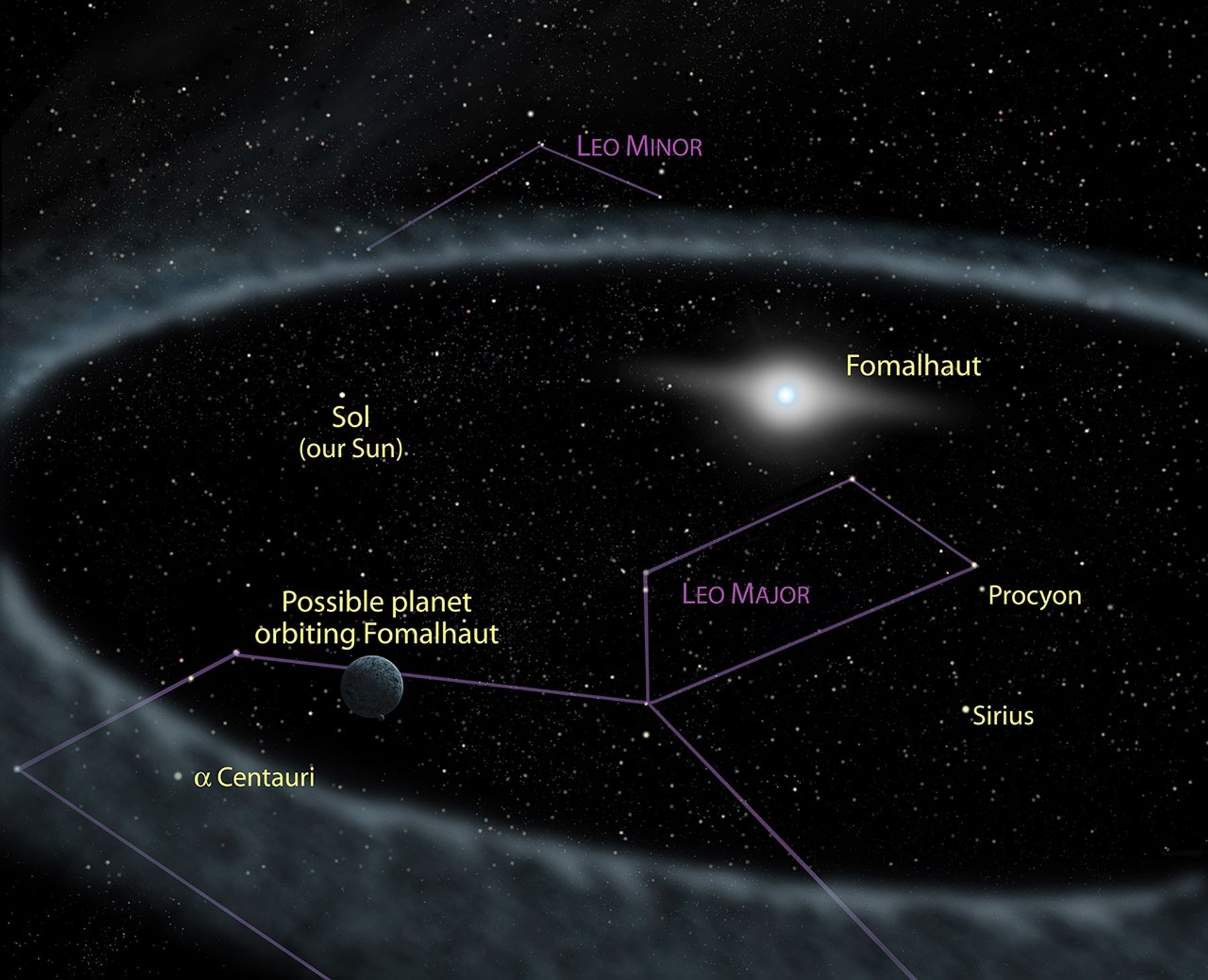
Fomalhaut Ring Artwork – Annotated
This illustration of a ring of debris encircling the star Fomalhaut shows the putative planet orbiting inside the ring. In this picture, the background stars and constellations are identified. This is not the same view we would see from Earth, because Fomalhaut is 25 light-years...
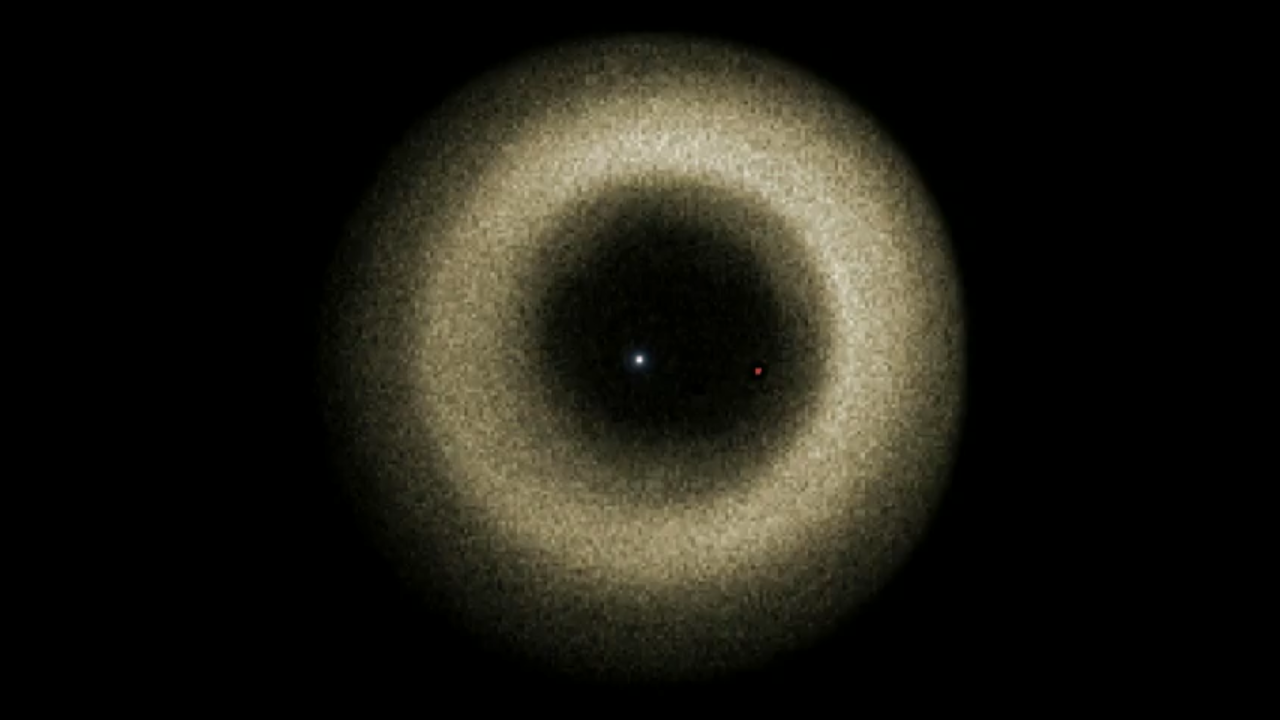
Simulation of Fomalhaut Planet and Ring – Face-on
Simulation of a planet and debris ring around the star Fomalhaut. The planet, in an eccentric orbit causes the center of the ring to be offset from the star. This animation is based on research by the independent research team of Adam Deller and Sarah Maddison (Swinburne Center...
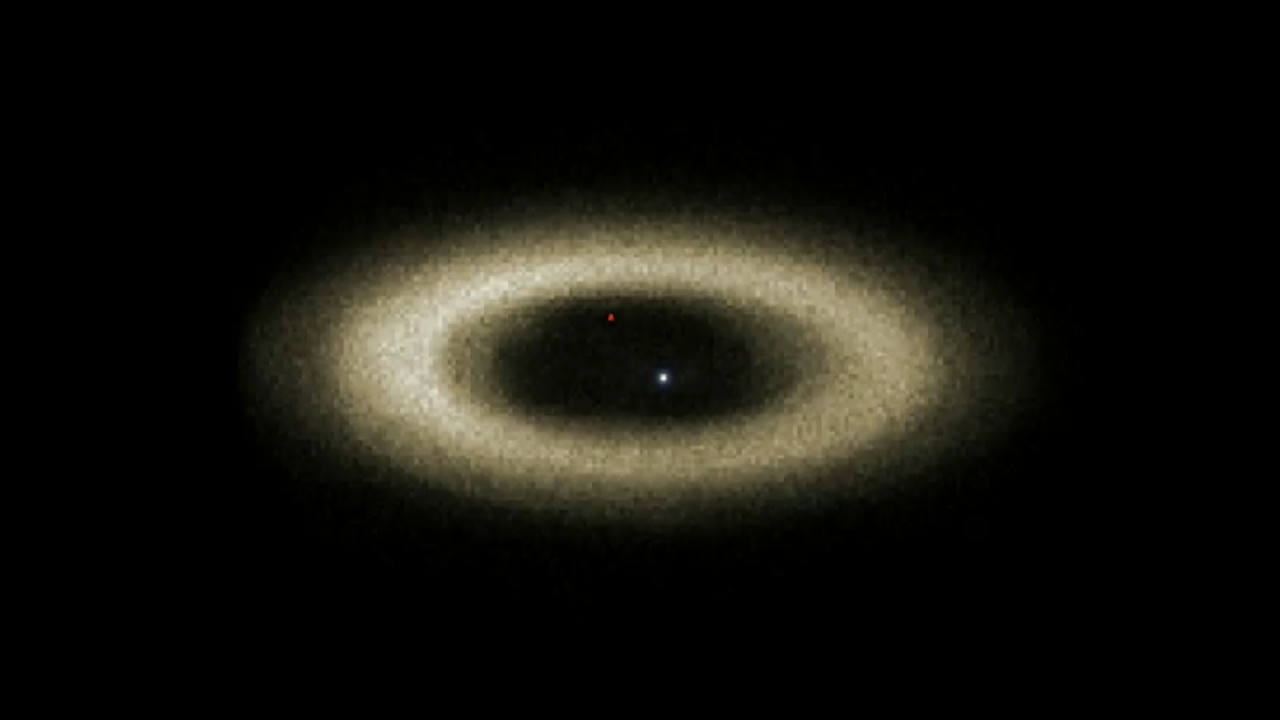
Simulation of Fomalhaut Planet and Ring – Inclined
Simulation of a planet and debris ring around the star Fomalhaut. The planet, in an eccentric orbit causes the center of the ring to be offset from the star. This animation is based on research by the independent research team of Adam Deller and Sarah Maddison (Swinburne Center...
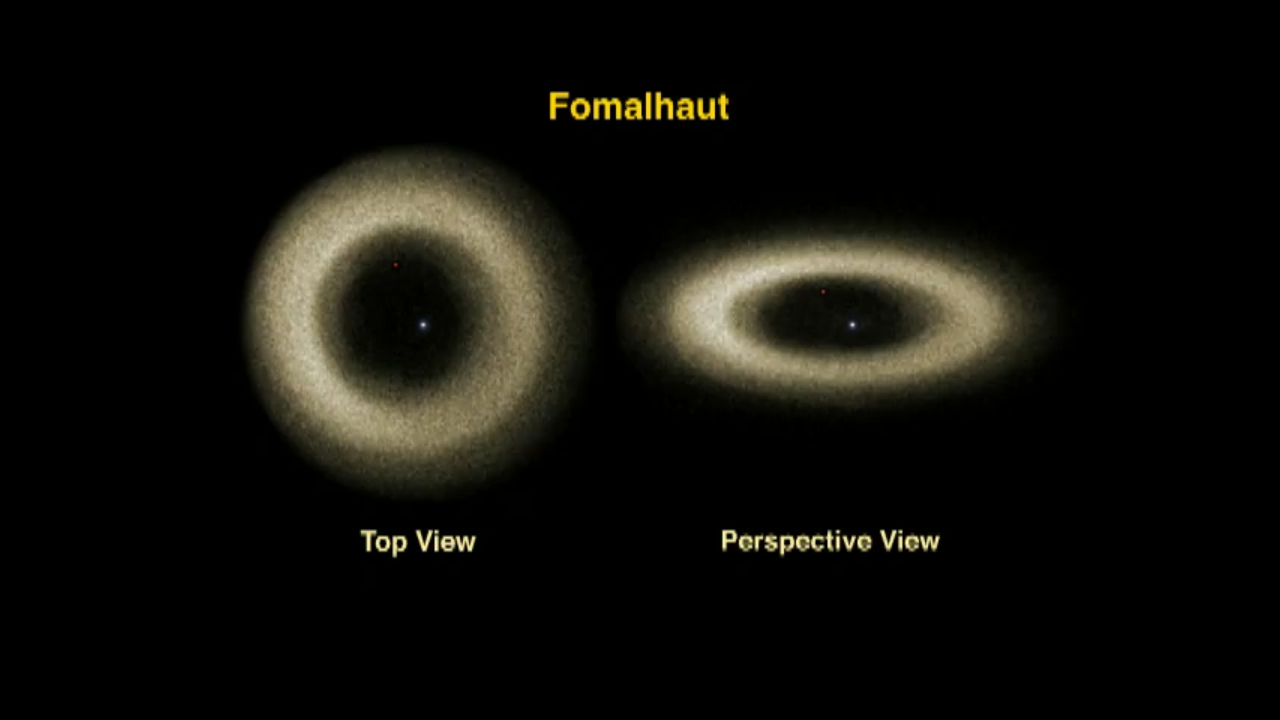
Simulation of Fomalhaut Planet and Ring – Face-on and Inclined
Simulation of a planet and debris ring around the star Fomalhaut. The planet, in an eccentric orbit causes the center of the ring to be offset from the star. This animation is based on research by the independent research team of Adam Deller and Sarah Maddison (Swinburne Center...
Share
Details
Claire Andreoli
NASA’s Goddard Space Flight Center
Greenbelt, Maryland
claire.andreoli@nasa.gov




